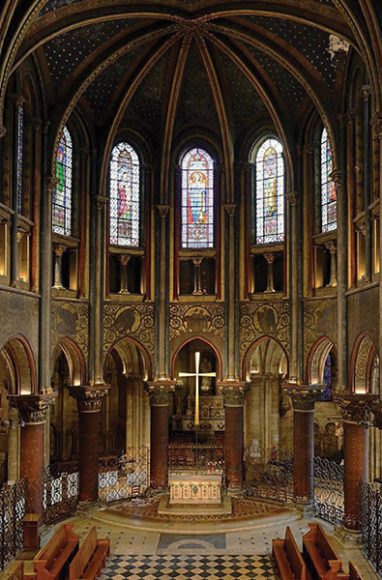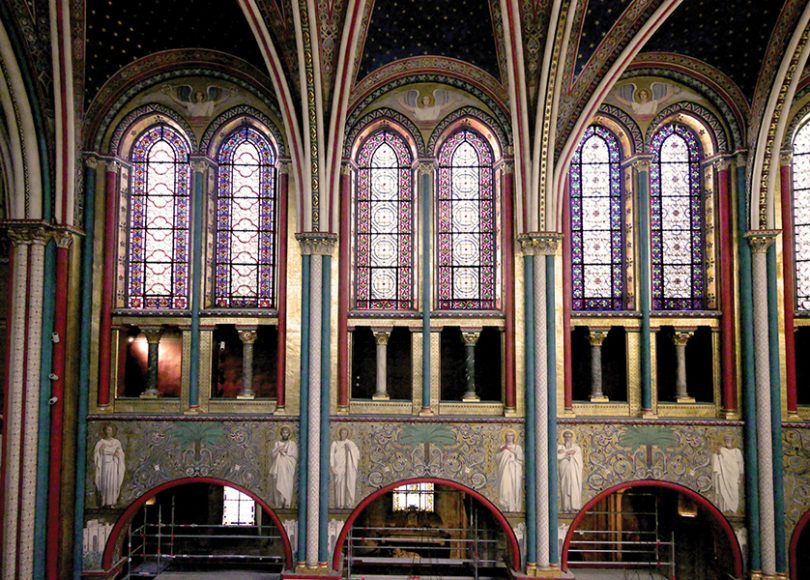Greenwich resident David Sheppe calls the Église Saint Germain des Prés “the beating heart of the beating heart of Paris.”
Not only is it the oldest église, or church, in Paris — dating back some 1,500 or 1,000 years, depending on your measure. But it also has the distinction of being the only French church to give its name to an area, Sheppe says, rather than vice versa.

“What I think is really key is to see the church not only as a church but as the center of a neighborhood that is the intellectual, cultural hub of Paris,” he says — a place that is home to galleries; bookstores; publishing houses; the École des Beaux-Arts, an historic visual arts academy; and, in the 1940s, the Existentialist Movement, spearheaded by Jean-Paul Sartre and Simone de Beauvoir.
Sheppe — who had a career in international banking with J.P. Morgan and the Standard Bank of South Africa — fell in love with the church and the neighborhood when he lived in Paris in the 1980s and from 2013 to ’16.
“It’s the most vibrant church I know in Paris,” he says of the jewel-toned Romanesque and Gothic-style structure. “On a Sunday evening, it’s filled with people from all walks of life, but what gets me is the number of young people, young families.”
Now a freelance consultant in finance and risk management, Sheppe is a member of the board of directors of the all-volunteer American Friends for the Preservation of Saint Germain des Prés Church, a “nimble” (that is, small) nonprofit seeking to raise funds for a seven-year, approximately $6 million restoration project under the direction of master architect Pierre-Antoine Gatier that is scheduled to be completed in 2022. While the city of Paris owns the church’s exterior and is providing some seed money, most of the work is in the interior, with 85 percent of the funds coming from private donors. The first part of Phase 1, The Monks’ Choir, is already completed with the second part, the restoration of the transept (the two “arms” of the cross-shaped interior), underway.
Phase 2 (this year and 2019) will focus on the central section of the nave, the body of the interior, while Phase 3 (2019-20) will include aisles, chapels and artwork. Phase 4 (2020-21) will be the ambulatory, a walkway that flanks the front of the church, and Phase 5, the Chapel of the Virgin Mary (2021-22).
It is an ambitious project for a church that has seen many changes over its lifetime. The original structure was built as a monastery in a field outside the ancient city of Paris in 543 by Childebert I — son of Clovis I, the first king of the French-founding Frankish tribe — and Germain d’Autun, the bishop of Paris, to house the tunic and other relics of the martyred St. Vincent of Saragossa. (When the bishop was canonized in 576, the abbey was dedicated to him.)
In subsequent centuries, it was destroyed by marauding Normans and Vikings and rebuilt in 1014. Throughout the High Middle Ages, it remained “a fantastic center of scholarship,” Sheppe says, with monks creating and copying not only religious texts but scientific works, a legacy that lasted through the Baroque period. During the French Revolution, however, monastic orders were disbanded, and the abbey was deconsecrated to be used as a gunpowder refinery. When 15 tons of saltpeter exploded on Aug. 17, 1794, the place lay in ruins. But the subsequent Napoleonic era saw a rebirth of religious freedom and Saint Germain. Decades later, novelist Victor Hugo (“Les Misérables”) would be among those clamoring for the church’s restoration, and, in 1843, it began with artist Hippolyte Flandrin painting murals of religious and historical figures and Christian scenes.
Those murals are among the restoration projects that the public can support today on the Friends of Saint Germain website. There you can Adopt a Saint Germain Star — one of the 3,000 that grace the church’s vaulted ceiling — and dedicate it to a loved one on the website’s interactive map. The adopted star is then illuminated and your chosen greeting displayed. (There are 800 stars left.)
“It’s really meaningful,” Sheppe says, “and it has really struck a resonant chord.”
For more, visit preservesaintgermain.org.






